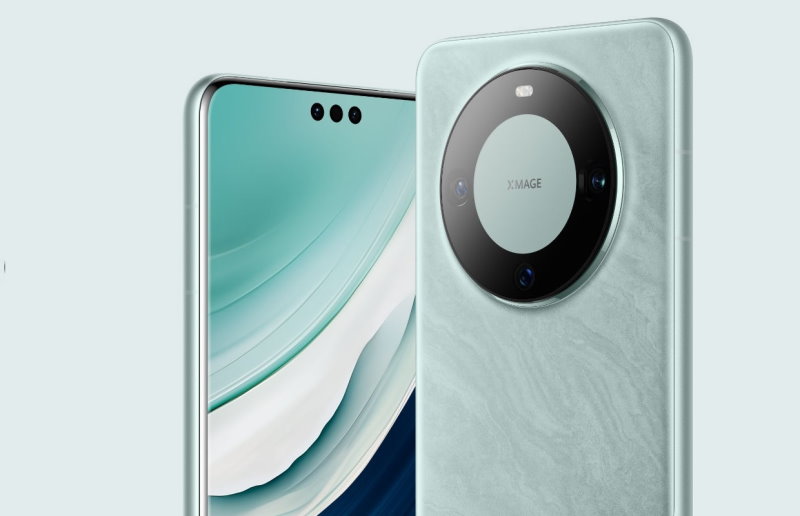
Is Huawei’s new phone really ‘sanction defying’?
Despite a low-profile launch, Huawei has re-entered the high-end smartphone market with a bang. The company’s first major model since getting hit by Western sanctions apparently matches the networking performance of Apple and Samsung flagship phones, leaving Western media and policymakers wondering: how did the Chinese telecom giant manage to build such a device without access to the world’s most advanced semiconductor technology?
Huawei was the first major target of US trade bans. In 2019, the Trump administration, citing national security concerns, barred the company from using Android and several other US-origin technologies. The following year, the sanctions were expanded with a license requirement for all Huawei semiconductor suppliers that use software or technology of US origin. This, among other things, prevented TSMC from supplying advanced chips to Huawei without Washington’s approval, since the Taiwanese foundry procures manufacturing equipment in the US.
The restrictions devastated the business of a company that once went head-to-head with Apple and Samsung. According to data from Strategy Analytics, worldwide unit sales plummeted from 240 million in 2020 to 60 million the year next, causing a 29 percent year-on-year revenue plunge. Huawei founder Ren Zhengfei famously circulated a memo urging employees to fight for survival over the next three years.

Double down
Now, it seems, Huawei is working on a comeback. Unannounced and without any promotion, the Mate 60 Pro went on sale last week without detailing key specifications, such as the CPU and wireless networking capabilities. The release sent Chinese social and state media into a frenzy, with users posting test videos showing the device achieving download speeds similar to today’s 5G smartphones. This, in turn, set off a race among teardown firms around the world to get their hands on one.
While many details remain unclear, the Mate 60 Pro is powered by a new system-on-chip called the Kirin 9000S, which was designed by Huawei’s semiconductor subsidiary Hisilicon and manufactured by China’s most advanced foundry, Semiconductor Manufacturing International Corp (SMIC), according to a teardown of the handset that Techinsights conducted for Bloomberg News. SMIC used its N+2 process, to which it refers as a second-generation 7nm process, although Chinese state media call it “5nm class.”
The 7nm node marked the transition to EUV lithography: initially, TSMC used multi-patterning techniques to fabricate 7nm chips, but it migrated to EUV once the technology was deemed mature enough for commercial production.
The Kirin 9000S raised questions about the efficacy of US-led Western sanctions, which aim to prevent China from manufacturing 14nm and more advanced chips. In an interview on Dutch current affairs program Nieuwsuur on Tuesday, ASML CEO Peter Wennink intimated that the Mate 60 Pro shouldn’t come as a surprise to anyone, as the restrictions essentially forced the Chinese to double down on innovation (link in Dutch).
Crackdown
It may be premature, however, to conclude that China is now quickly catching up despite the sanctions. First of all, it’s still unclear with what models the Mate 60 Pro can compete. Initial reports suggest that the new phone's speed was accomplished through advanced-packaging, with higher power use as a trade-off. Based on publicly available user videos, some pundits have already qualified the phone as ‘mid-range.’ So while Huawei has shown it’s still in the game, it shouldn’t alarm Western policymakers.
Secondly, we still don’t know the extent of China’s chipmaking might. Can SMIC manufacture the Kirin 9000S in volume? Are all Mate 60 Pro devices powered by one, or did Huawei also use chips that were stockpiled before the sanctions came into effect? How do costs stack up against comparable chips? Does SMIC have a path forward without access to EUV scanners or additional advanced DUV equipment from ASML? The Mate 60 Pro was available only in limited quantities and sold out quickly. Huawei says new units are expected by mid-September.
So far, US authorities haven’t publicly responded to claims by Chinese state media that “the US has failed with its extreme crackdown on China.” Industry experts have suggested that additional export restrictions may be forthcoming. “This shows that Chinese companies like Huawei still have plenty of capability to innovate. I think it will also probably intensify debate in Washington on whether restrictions are to be tightened,” Chris Miller, author of the book “Chip War”, told the Washington Post.
“The difficulty of this achievement also shows the resilience of the country’s chip technological ability. At the same time, it’s a great geopolitical challenge to the countries that have sought to restrict its access to critical manufacturing technologies. The result may likely be even greater restrictions than what exist today,” comments Dan Hutcheson, vice chair at Techinsights.





